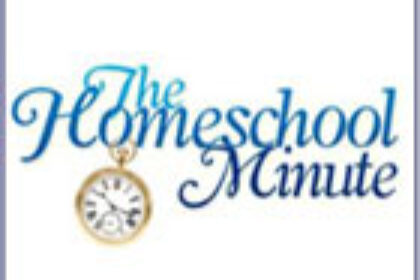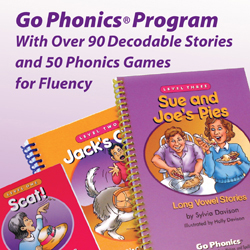A Moment with The Homeschool Minute~ Deborah Wuehler – Mercy Every Minute

Click on the banner below to sign up for the Homeschool Minute E-Newsletter, and receive weekly encouragement to guide you along your homeschooling journey.
How do you teach children phonics? If your child is very young (ages 3-5) and is not getting simple alphabet sounds, you might wait a few months and try again. In the meantime, use his love for videos or games to get him used to letter recognition and phonetic sounds. Small children are created to wiggle and move and play in order to learn about life and their part in their own home and environment. If they are not physically ready to sit still for a few minutes of phonics instruction, they can still learn through other means like audio/visual/kinetic recognition and repetition.
If they are older (ages 6-9) and they still cannot sit still, then you may have to teach phonics (or any subject) in a more hands-on, creative way. They can learn while doing something else at the same time. It might actually help them to listen and understand better. If they are concentrating and using all their energy to sit still, then their learning gates may not be able to take anything more in. If you allow them to learn while bouncing or building or squishing something, they may just make a ton of progress. (We have two great articles on teaching fidgety kids in our 2013 PRINT issue.) Physical movement is a critical part of learning. Don’t think of it as a disruption, but as a vital part of the process.
We all need to let our children know that we love them unconditionally and are never frustrated with them because they are not “getting it.” This gift of love and patience will encourage our children to overcome any challenge that comes their way. They need to know that we are with them. And that means physically as well. We can’t always hand them a workbook and hope they learn something. Children will learn; they just need an engaged teacher. And since God gave us this job; we can do this with His help as we seek Him!
Here are lots of phonics products, reviewed by homeschool moms just like you! There may be something here you haven’t considered yet.
Let us pray for continued freedom here in America, where we are still blessed to be able to work with our children’s natural gift of learning as we keep them Home Where They Belong.
~Deborah
dwuehler@thehomeschoolmagazine.com
P.S. We inadvertently had the wrong link in our most recent issue of TOS for a reading product titled, You Can Teach Someone to Read: www.youcanteachsomeonetoread.com Please check this link out if you are in need of help with teaching a child to read. Here is what Debra Bell, author of The Ultimate Guide to Homeschooling, had to say about it: “You Can Teach Someone to Read by Lorraine Peoples may be the simplest and least expensive way to teach a child to read.”
|
Sponsor Article How to Teach Phonics When you launch into teaching a beginning or struggling reader, give him a solid foundation of language skills with phonics-based lessons that include language arts. An effective approach (used by reading specialists) is phonics instruction that’s explicit, systematic, sequential, multisensory, and applied–in spelling, worksheets, writing, and reading decodable stories. Engaging support materials will have him “chomping at the bit” to start each lesson. The goal: to empower him to fluently decode (sound out) most words to read, and to know the spelling choices and rules. If he’s not sure of the spelling, he’ll know what to look up. The long-term goal: He can more easily access the codes to read, write, and speak with greater ease (less stop and go, more flow).
From the start (alphabet), teach each letter/sound EXPLICITLY. Teach its name, proper formation, key word, and sound all in the same lesson. This is also prep for using handwriting throughout your instruction. It serves as the kinesthetic sense in MULTISENSORY. It helps to trigger the correct responses for both reading and spelling.
Using simultaneous MULTISENSORY techniques supports all learning styles. Some are visual (photographic memory), some auditory (remember what they hear), and some kinesthetic (hands-on). Few are strong in all three. Utilizing all three sends a stronger message to the brain AND strengthens the weaker senses.
Teach a good phonics SEQUENCE of patterns and relationships–well organized, filed in memory, and easier to access.
With each lesson, practice decoding words in a game–so it’s FUN! It builds decoding fluency before reading a decodable story for the lesson.
Always APPLY the phonics skill to “make the connection” to the language. Include read alouds, activities, word play, word decoding games, creative telling and writing, worksheets, and decodable stories. He’ll build confidence and have a more joyful, successful experience.
Holly Davison (designer and illustrator) partnered with mother, Sylvia S. Davison (author and veteran teacher for over 45 years) to create the Go Phonics Reading Program. The program was fueled by Sylvia’s dream: to have engaging, integrated tools that would empower parents and educators to effectively teach a beginning or struggling reader. High on the list was phonetically sequenced, decodable stories that support an Orton-Gillingham sequence (to minimize confusion). Now there are 7 volumes and over 600 pages. To learn more about effective teaching strategies, and to download sample lessons and stories, visit: www.gophonics.com. |





































